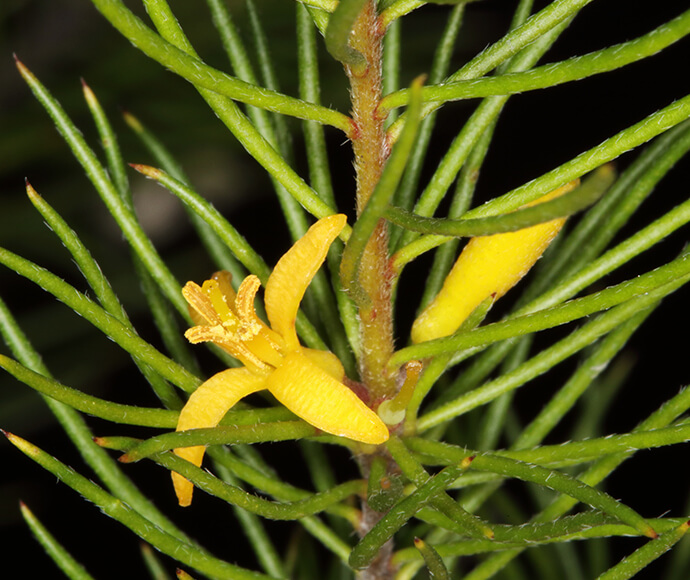Beating the odds for biodiversity
National Threatened Species Day is commemorated nationwide on 7 September to raise awareness of plants and animals at risk of extinction.
The date marks the anniversary of the death of the last remaining thylacine (best known as the Tasmanian tiger) at Hobart Zoo in 1936. It is a crucial reminder of the fate facing many of our threatened species if we don't take action.
While reflection is important, Threatened Species Day is also an opportunity to acknowledge the work being done to protect our precious native plants and animals and to celebrate the achievements and milestones we have reached in shaping a future for the species of New South Wales.
From saving a threatened orchid over a pint at the pub, adapting our urban areas to give frogs a home, rediscovering species that were thought to be lost, to connecting the protection of a critically endangered bird to healing Country, in honour of 7 September, Saving our Species is sharing 7 stories of species beating the odds for biodiversity.
Super seedlings help critically endangered species thrive
Located in littoral (coastal) rainforest behind one of Australia's most famous surf breaks near Lennox Heads on Bundjalung Country, a critically endangered species was on the brink of extinction. With just 10 wild adult plants left, the coastal fontainea (Fontainea oraria) is now blossoming, thanks to the expertise of the Saving our Species team.
In 2010, cuttings were taken from the remaining 10 adult coastal fontainea trees and used to plant a new population. Fast forward to today, there are now nearly 5,000 trees, many flowering and fruiting, and producing seeds 'more robust' than those from the original plants.
These super seedlings are more genetically diverse, which means they may be better able to cope with threats such as climate change, pests and diseases. This is known as 'genetic rescue'. To keep these seedlings thriving, some have been transferred to a local nursery where they are grown for future planting at suitable, safe sites.
The project is being delivered by Saving our Species in partnership with Bushland Restoration Services, Landmark Ecological Services, Royal Botanic Gardens, Ballina Shire Council, Firewheel Rainforest Nursery and local landholders. With such strong support and trees and seedlings now thriving, it is hoped that the coastal fontainea population will continue to flourish for generations.
- Learn more about the coastal fontainea.
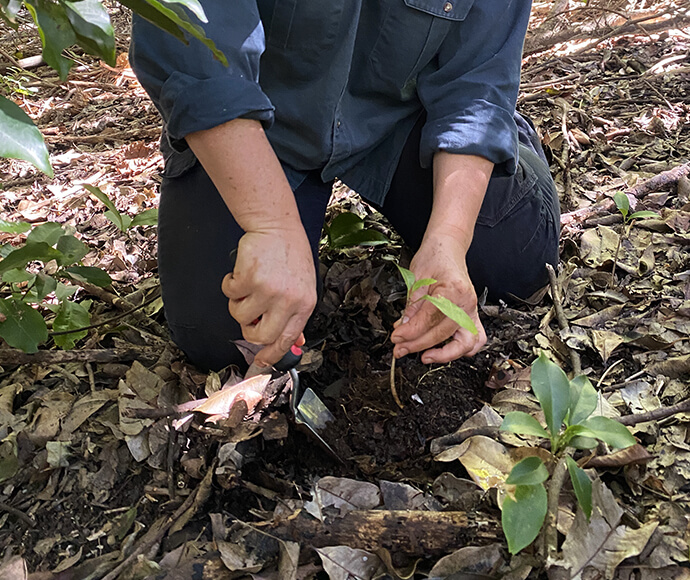
Ribbiting new habitat helps species survival
Housing is a hot topic for everyone right now – even for our frogs. Thanks to an innovative project between the Saving our Species program and Albury City Council, more than 100 endangered Sloane's froglets are hoppy in their swanky new digs in Albury on Wiradjuri Country.
Only a few populations are remaining across New South Wales, with the majority occurring in urban and industrial areas of southern New South Wales.
Saving our Species is working with the council to modify stormwater basins to operate like artificial wetlands, giving these little hoppers a safe place to coexist as urban areas grow. It's a great example of how humans can adapt and coexist to support the longevity of threatened plants and animals.
- Hop over to discover more about the Sloane’s froglet.
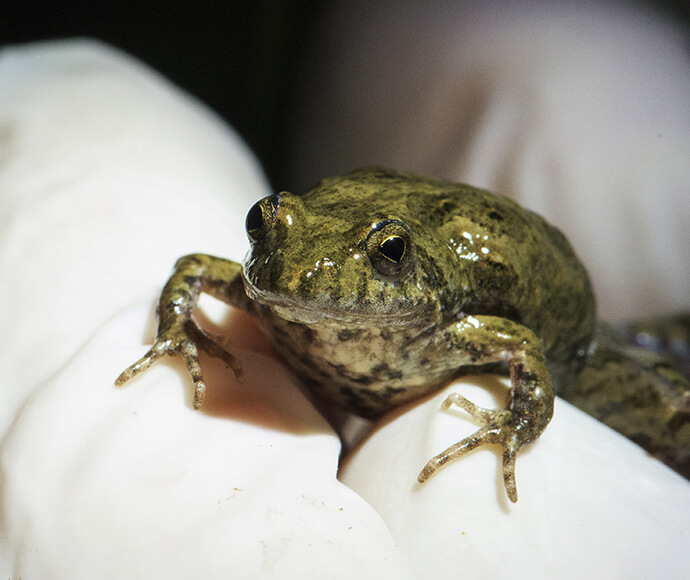
A trip to the pub helps discover new populations of endangered species
An orchid researcher and a citizen scientist walk into a pub... what might sound like a budding joke led to new populations of the rare buttercup doubletail orchid (Diuris aequalis) being uncovered.
The Saving our Species 'Spring Orchid Challenge' at a 'Science at the Pub' night on Ngunnawal/Ngambri Country in Canberra in 2022 encouraged citizen scientists and private landholders to actively look for the threatened species while venturing out to their local nature reserves. With only about 2,000 of the plants known to exist in the wild in New South Wales, the subsequent detection of 4 new populations and the knowledge shared by local communities has been critical to protecting this vital orchid.
With these new populations found and now protected, Saving our Species officers recently completed hand pollination, helping the orchids to produce seeds and boost population numbers in the future. It's rousing to know that a trip to the pub (in the name of biodiversity) can be fruitful.
- Read more about this session and the findings which followed.
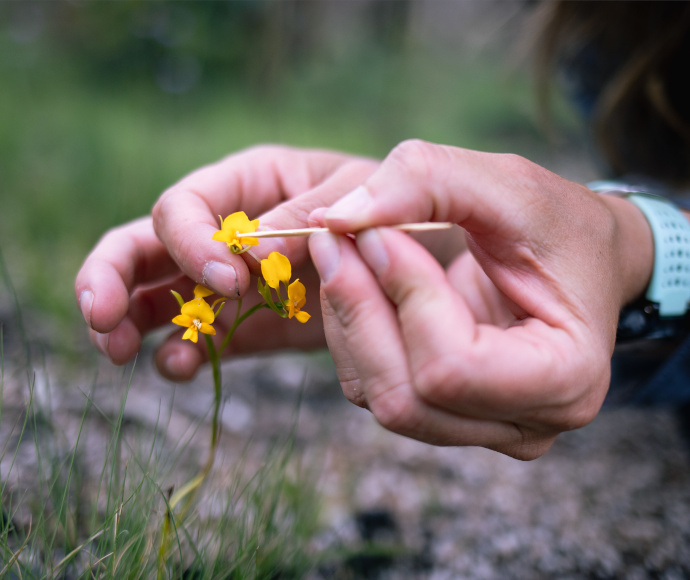
A flaming-good rediscovery
The critically endangered Seaforth mintbush (Prostanthera marifolia) is highly restricted to the suburbs of Seaforth in Sydney's northern beaches on Gamaragal Country.
First discovered in 1810, the species was collected and recorded for over one hundred years. But after not being seen for several decades, from about 1927, it was thought to be extinct. Thankfully, it was rediscovered in 2001 and is under the careful care of the Northern Beaches Council.
Saving our Species joined the efforts to protect this precious shrub in spring of 2017, and surveys indicated 58 plants were remaining. In 2019, the fire-loving species got a flaming-good helping hand with a controlled burn which led to massive recruitment from the soil seedbank, and by 2022, 694 plants were recorded.
Helping to bring this threatened species back from the brink of extinction has been a combined effort with Saving our Species working together with the Northern Beaches Council, the Royal Botanic Gardens, Australian Botanic Gardens and Rural Fire Brigade. Ongoing monitoring and fire management will continue to protect the growing population and secure the future of the Seaforth mintbush.
- Find out more about this critically endangered species.
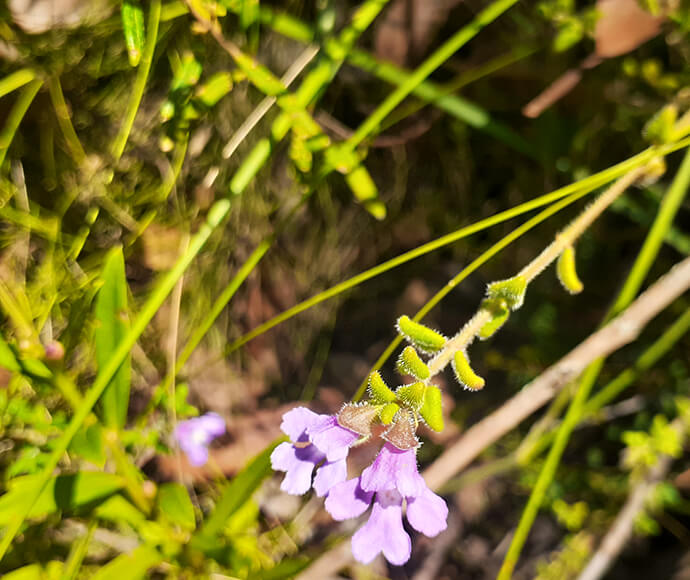
A sen-snail-tional result: new and old species uncovered
Imagine spending 553 hours searching for a needle in a haystack – that almost summarises the search effort for snail species on Lord Howe Island.
A collaboration between Saving our Species and the Australian Museum has seen an average of 45 sites searched each year, including on the summit of Mount Gower (which is an 8-hour return hike for context).
As a result of this mammoth effort, the snail brigade recently discovered some species that have not been documented alive and in the wild for more than 20 years. They also found several species that had never been seen alive, including the Ball's pinwheel snail (Pseudocharopa balli), Deliciola charis and Lord Howe microturban (Monterissa gowerensis).
If that wasn't epic enough, 10 new species were also discovered and high numbers of the Whitelegge's land snail (Pseudocharopa whiteleggei) and Mount Lidgbird charopid land snail (Pseudocharopa ledgbirdi) were recorded, adding to the sen-snail-tional outcomes.
- Find out more about these species on our Whitelegge's land snail and Mount Lidgbird charopid land snail profile pages.
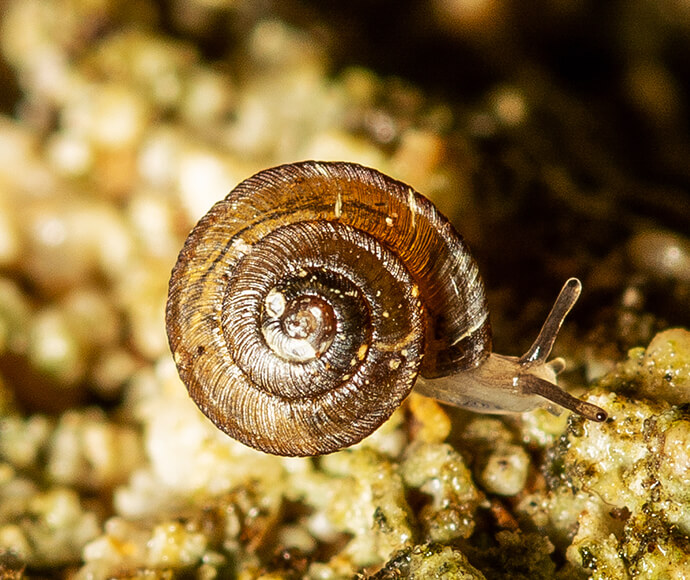
Saving regent honeyeaters and healing country
With fewer than 350 regent honeyeaters (Anthochaera Phrygia) left in the wild, a breeding and release program involving Saving our Species, Mindaribba Local Aboriginal Land Council, Taronga Conservation Society Australia and Birdlife Australia is crucial to boosting numbers of this critically endangered bird.
Two years in a row, birds were released on Wonnarua Country, where the Mindaribba Local Aboriginal Land Council has made land available for the birds to take flight.
The council is working with Saving our Species and partners to help the honeyeaters find their song, a story parallel to the reawakening of Wonnarua language and cultural connection to Country.
'In helping the birds find their song and People using Wonnarua language once more, the voice of the sacred Country we are standing on can again be truly understood,' said Tara Dever, CEO of Mindaribba Local Aboriginal Land Council.
- Watch the release happen: Regent honeyeaters released onto Wonnarua Country (video).
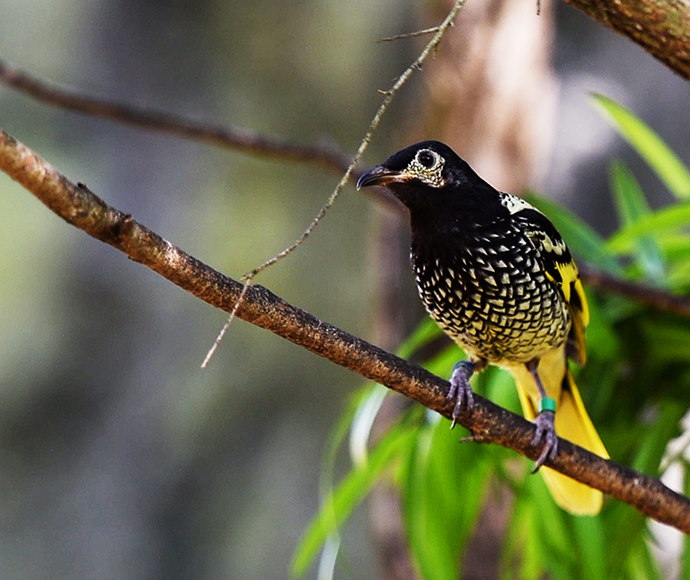
Moving and grooving in the right direction
The success story behind this critically endangered species has a lot to do with a pot, a spade and many hands making light work of an enormous task.
Found only in the Hunter region on Wonnarua Country, the North Rothbury persoonia (Persoonia pauciflora) has been on a recovery journey since 2012, when only 350 mature plants were left in the wild.
To protect this species, cuttings from the wild population were used to grow seedlings to establish a new subpopulation within Tiraki National Park. Establishing a population within a conservation reserve was important as it ensures long term protection and management of this species.
Thanks to many volunteers from the community, Saving our Species officers and staff from the Botanic Gardens of Sydney, 789 Persoonia plants have since been planted. This has helped bolster the wild population, which now consists of approximately 1,000 plants. There is still a way to go, but the future is looking better for this bright green shrub.
- Check out the North Rothbury persoonia's profile.
